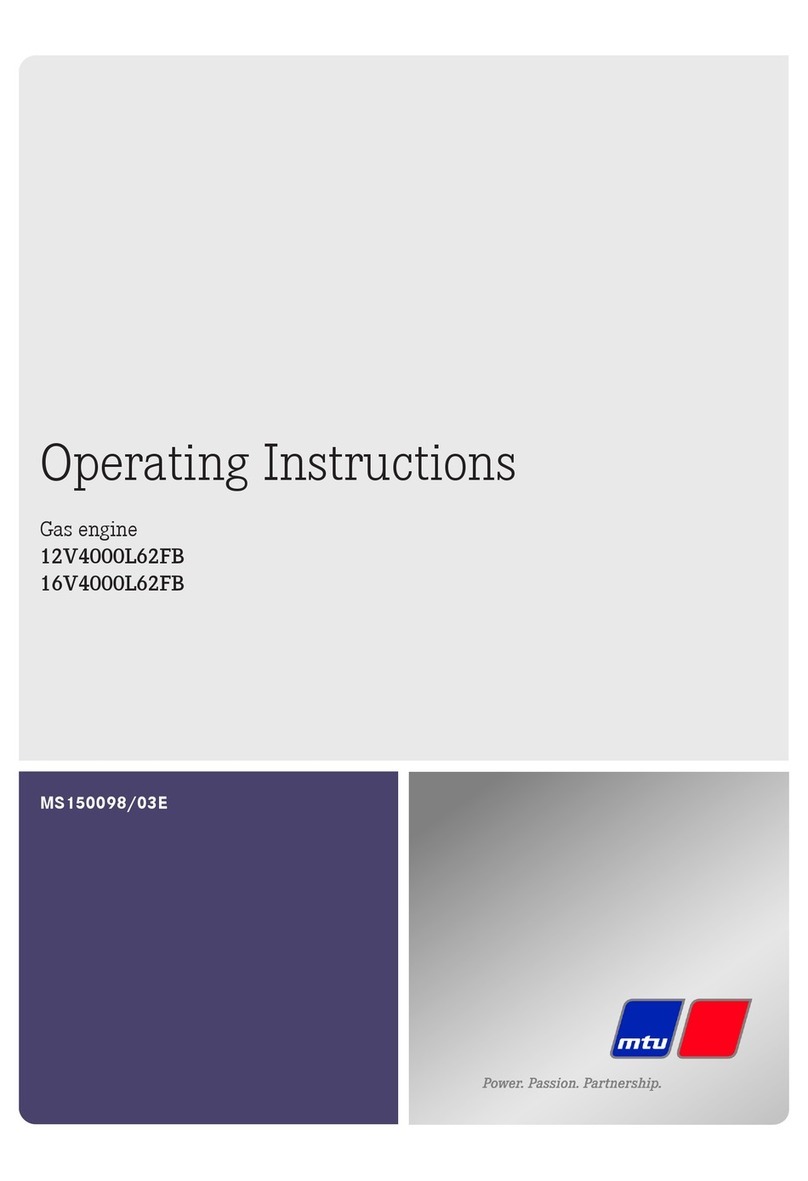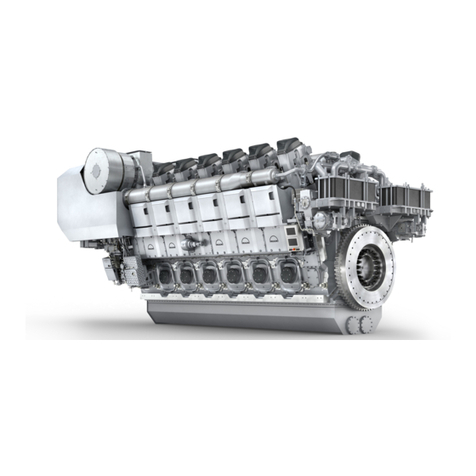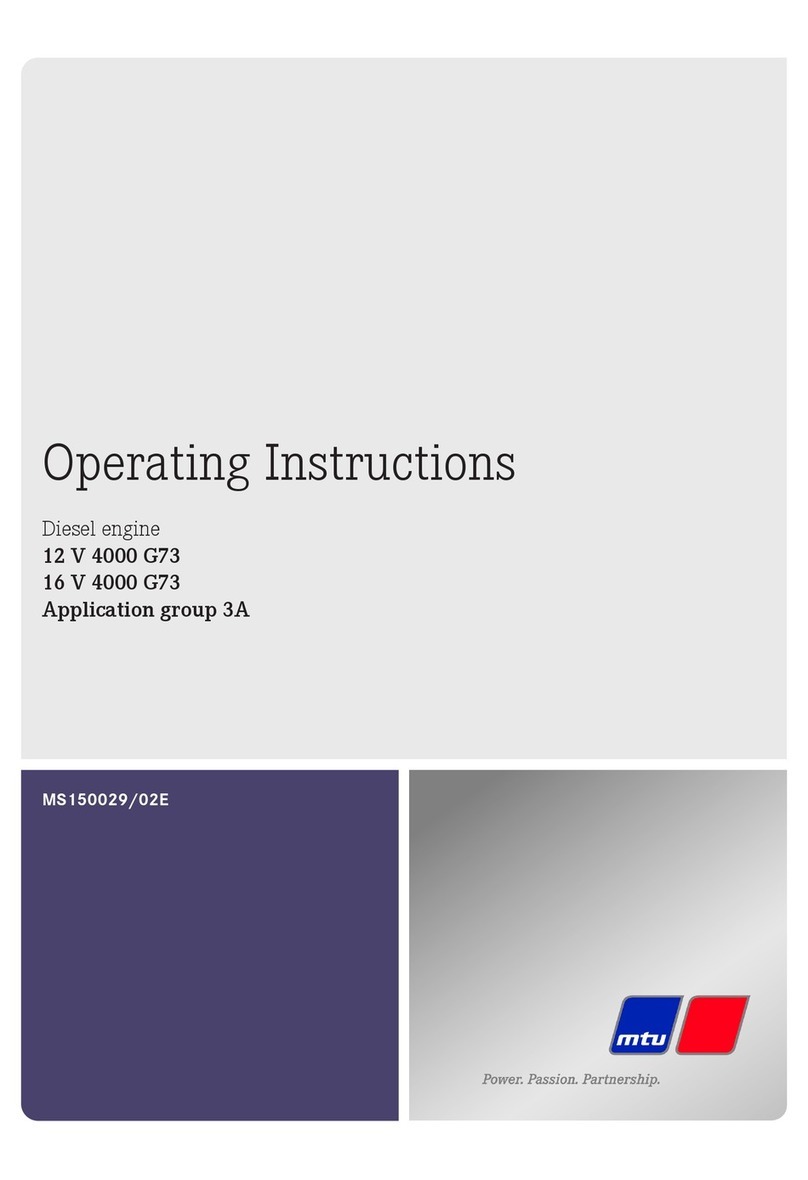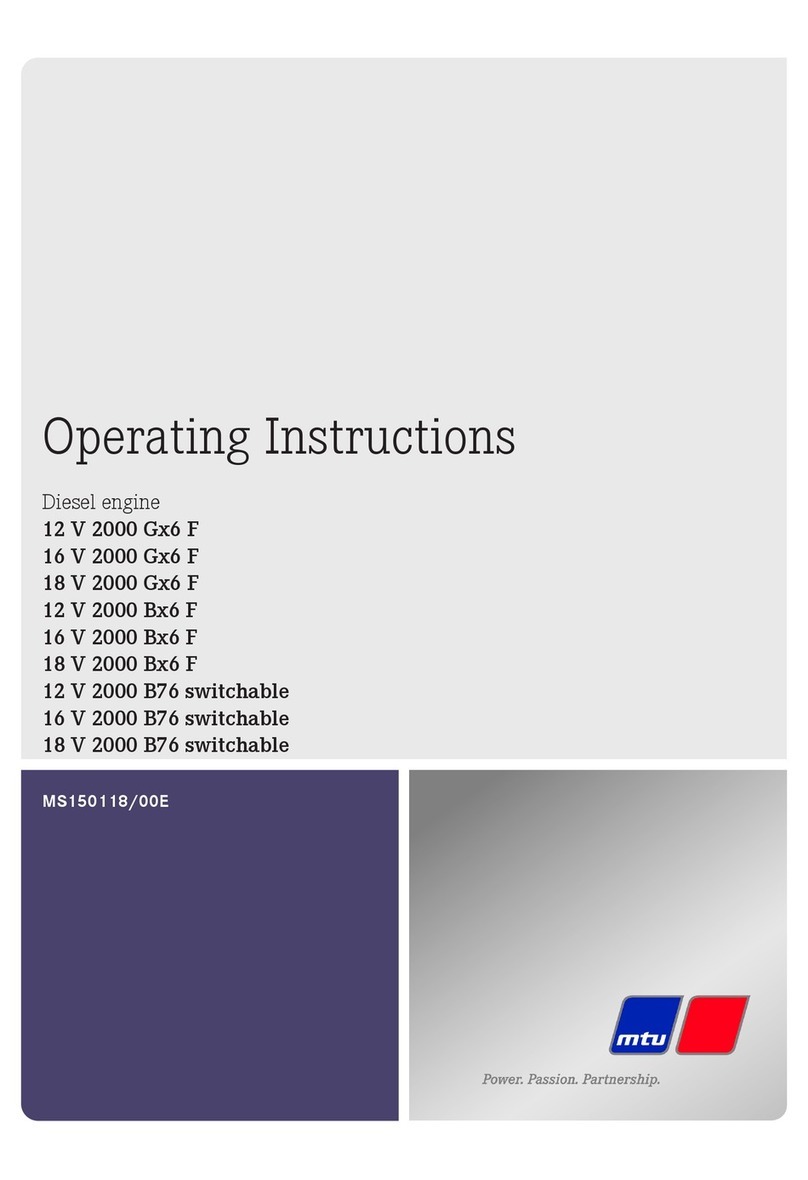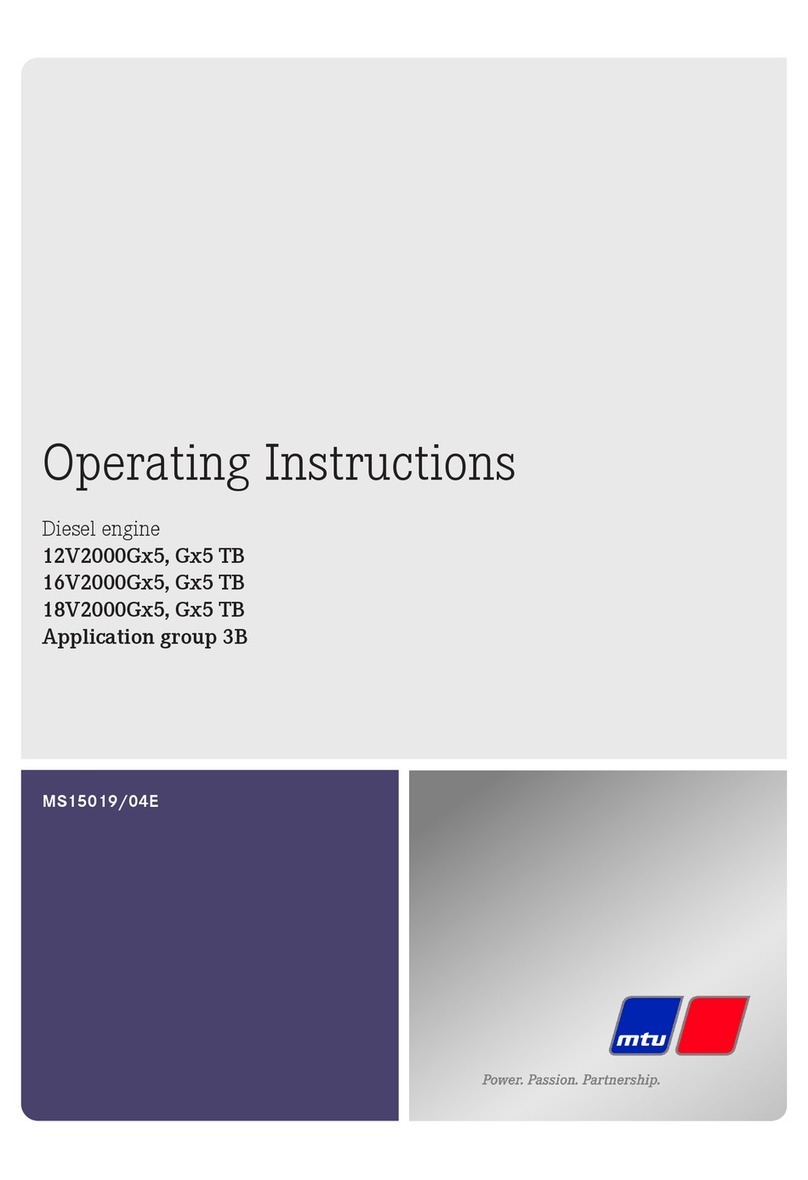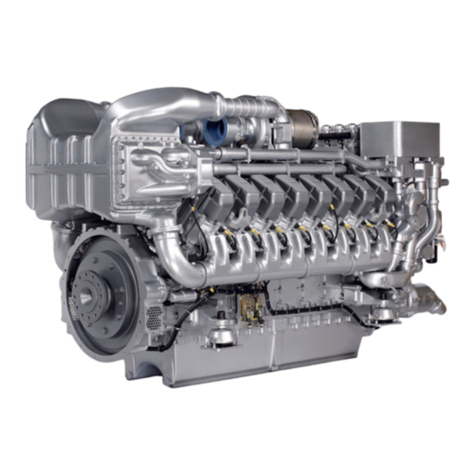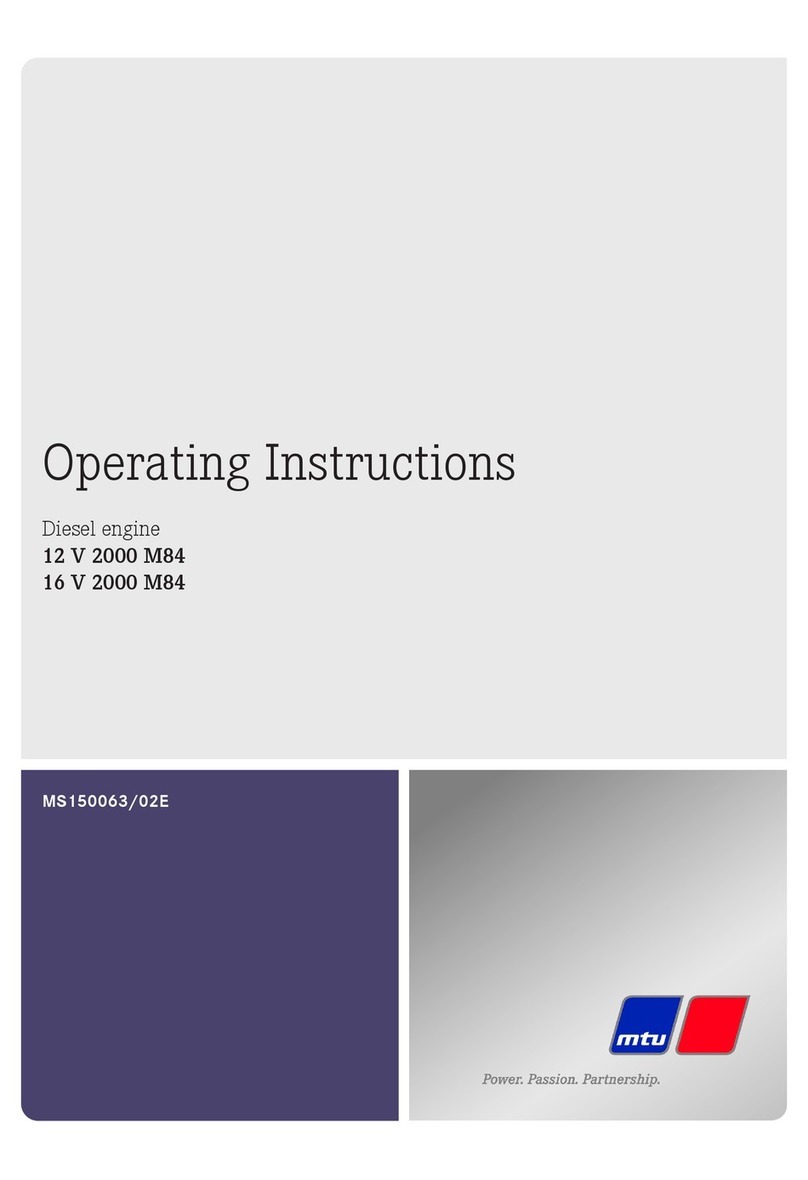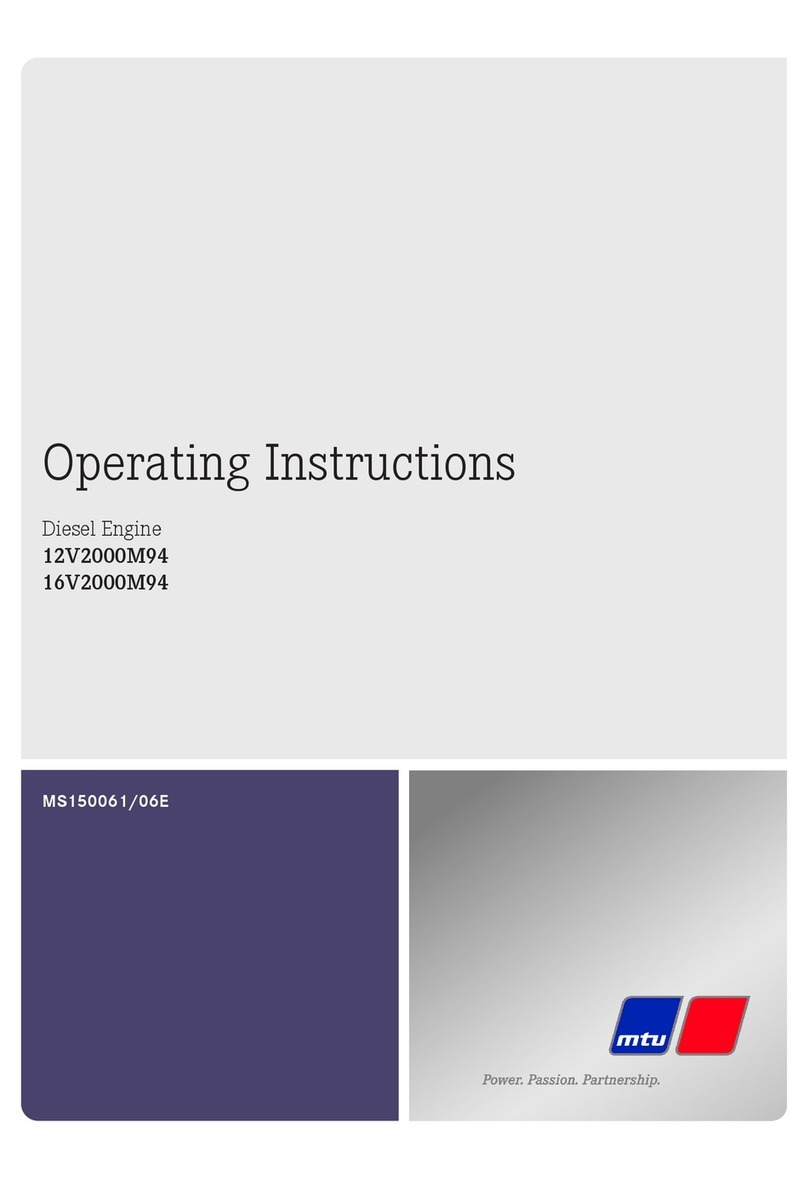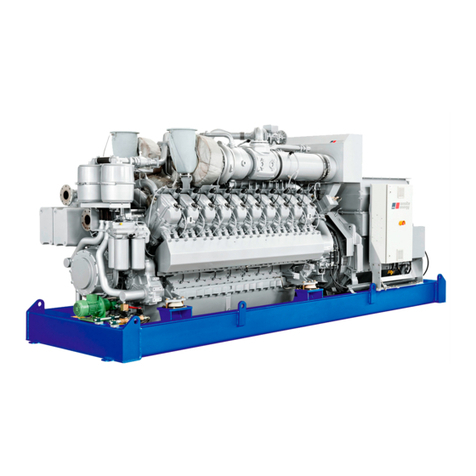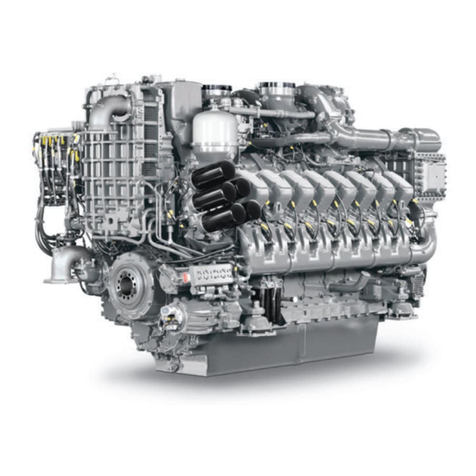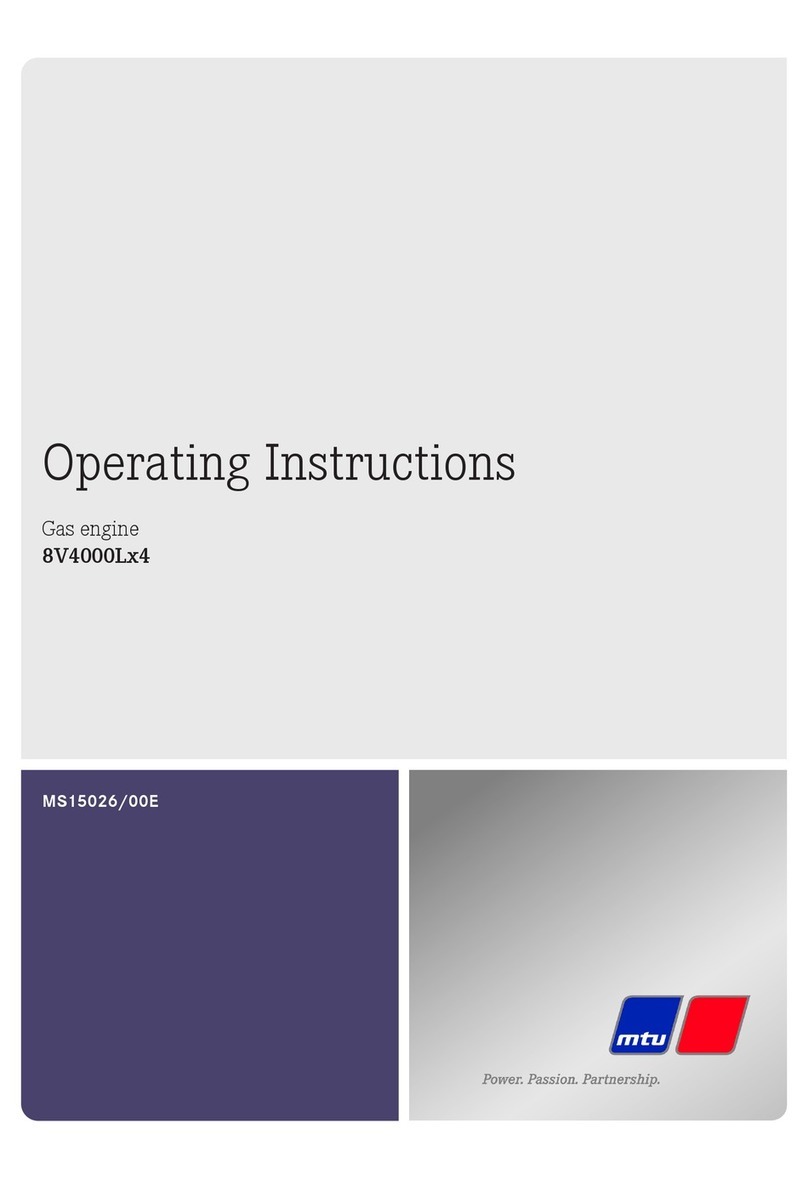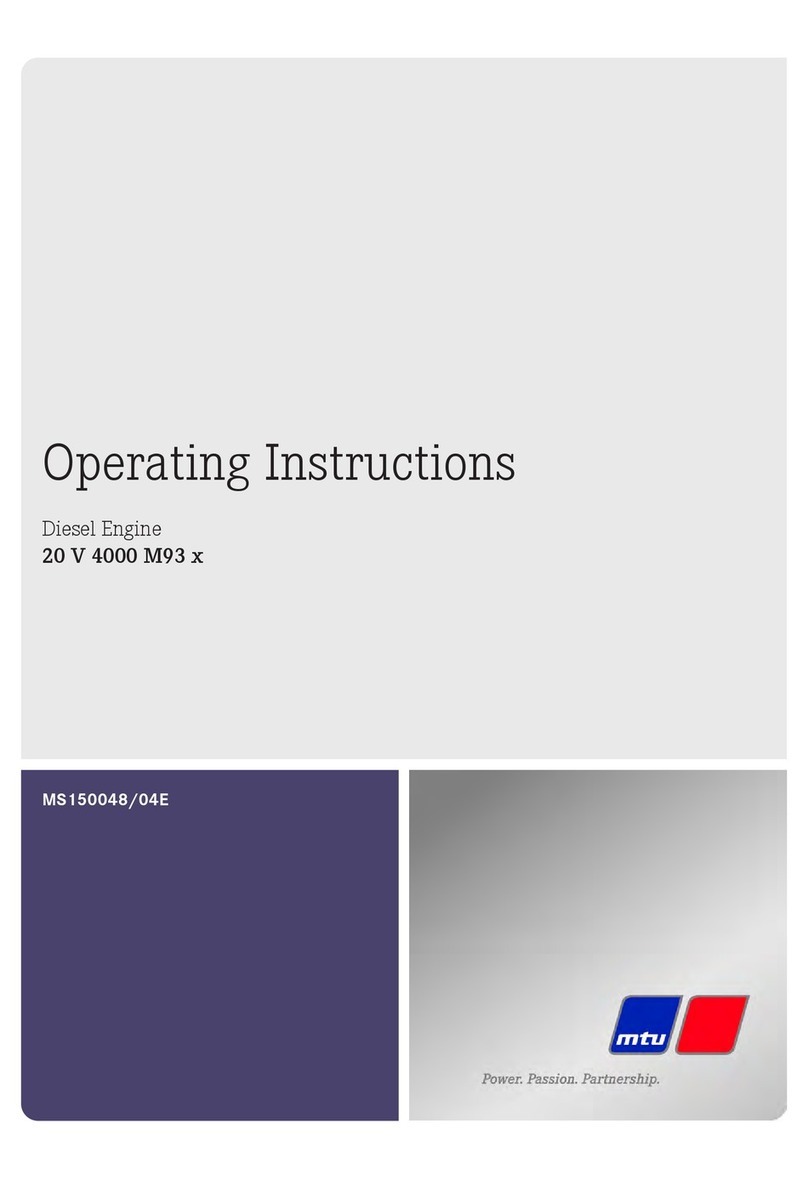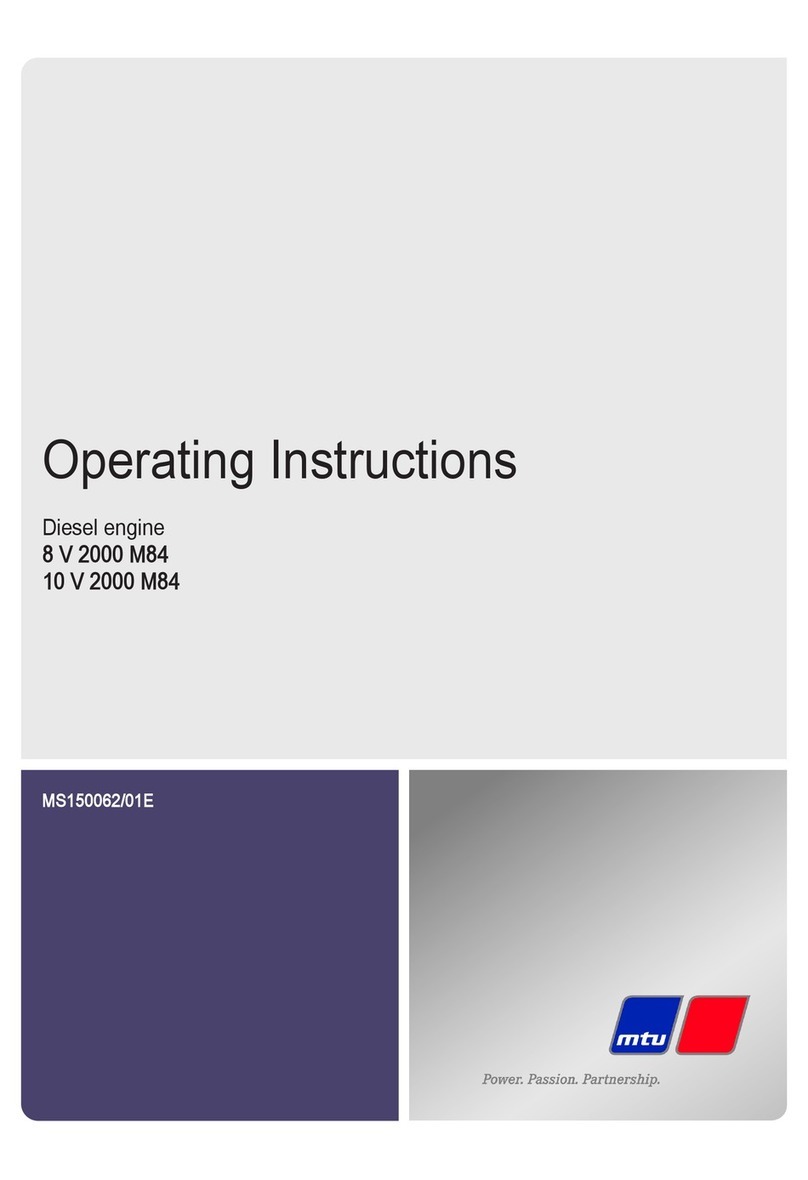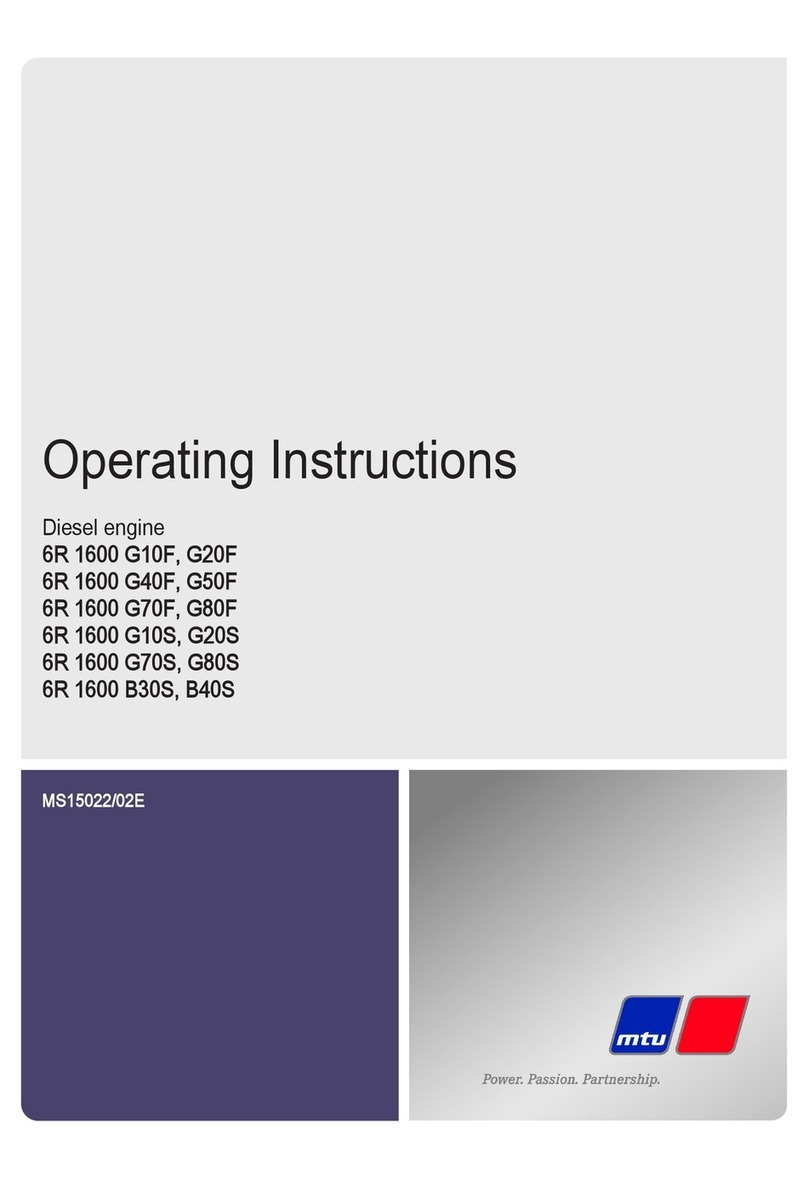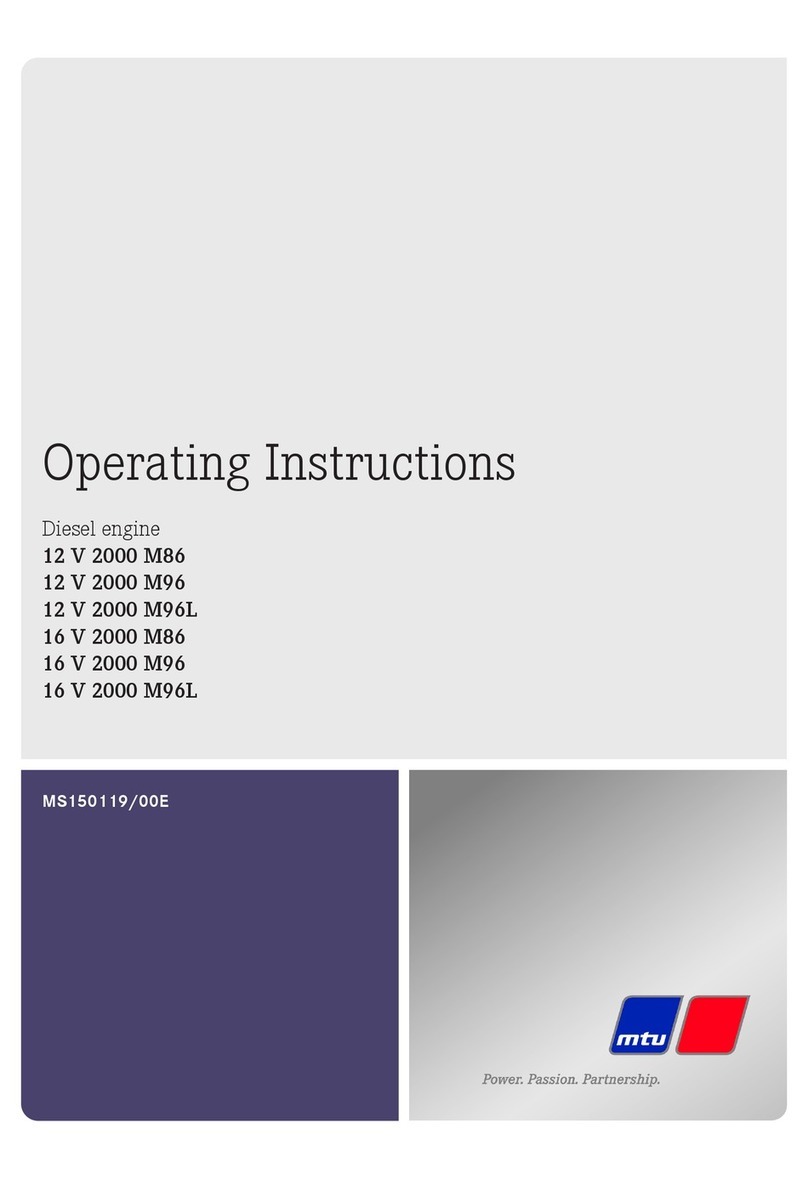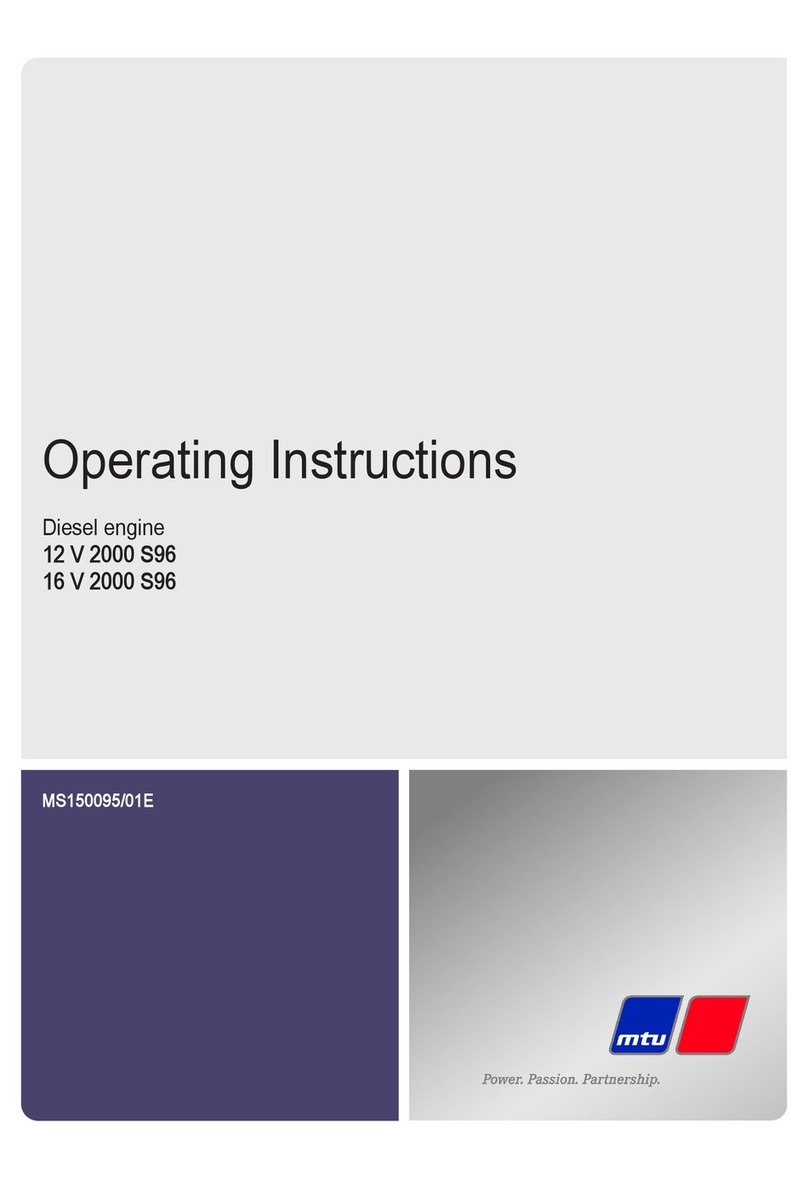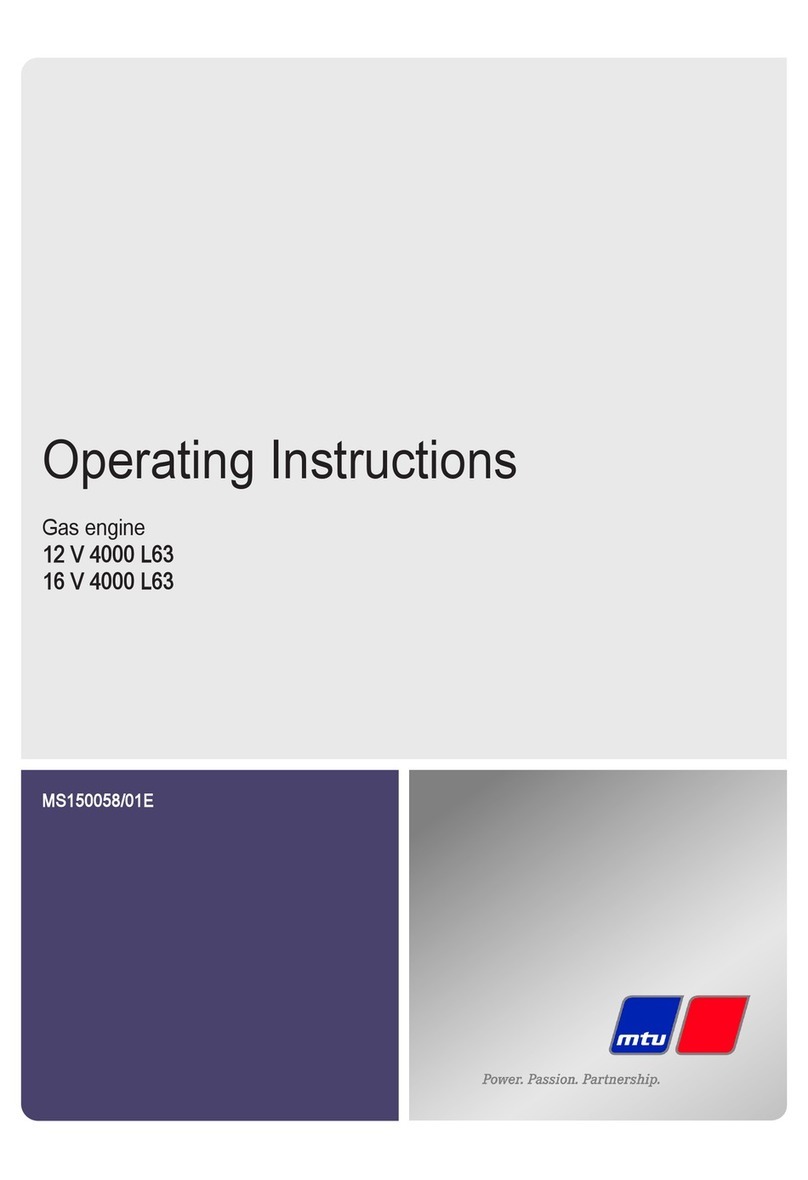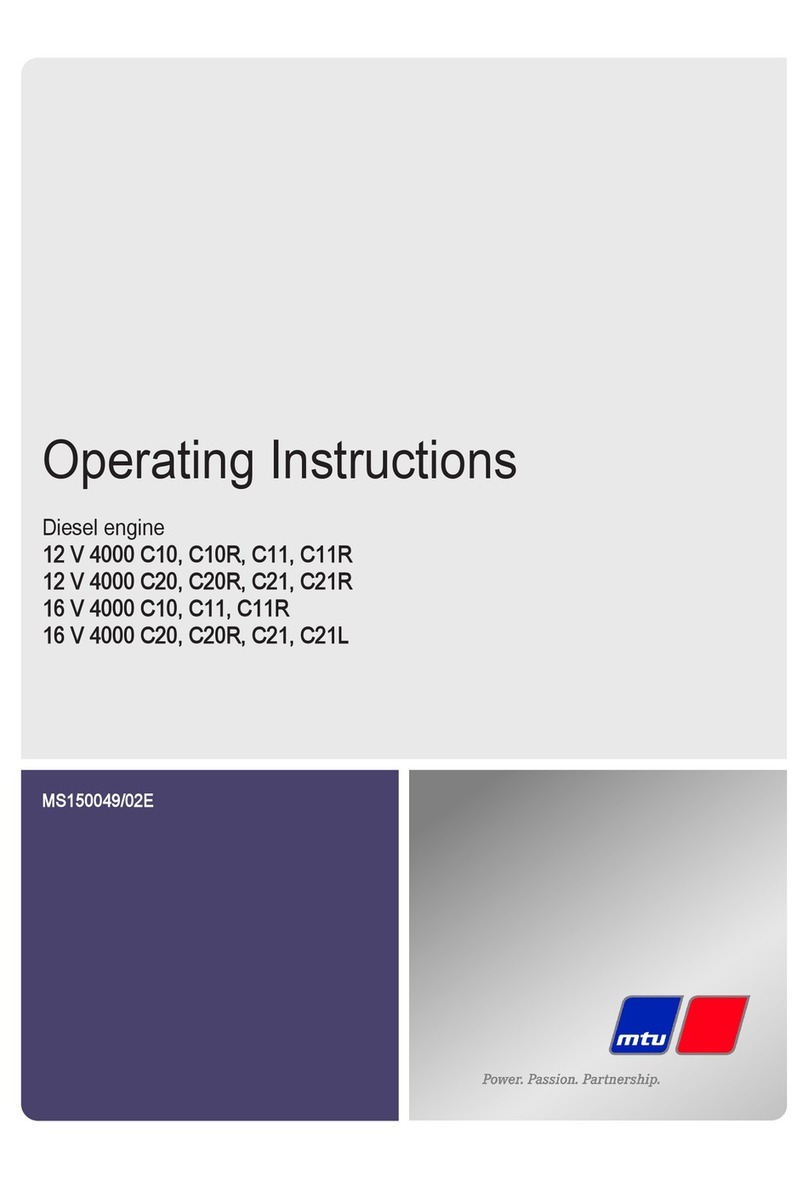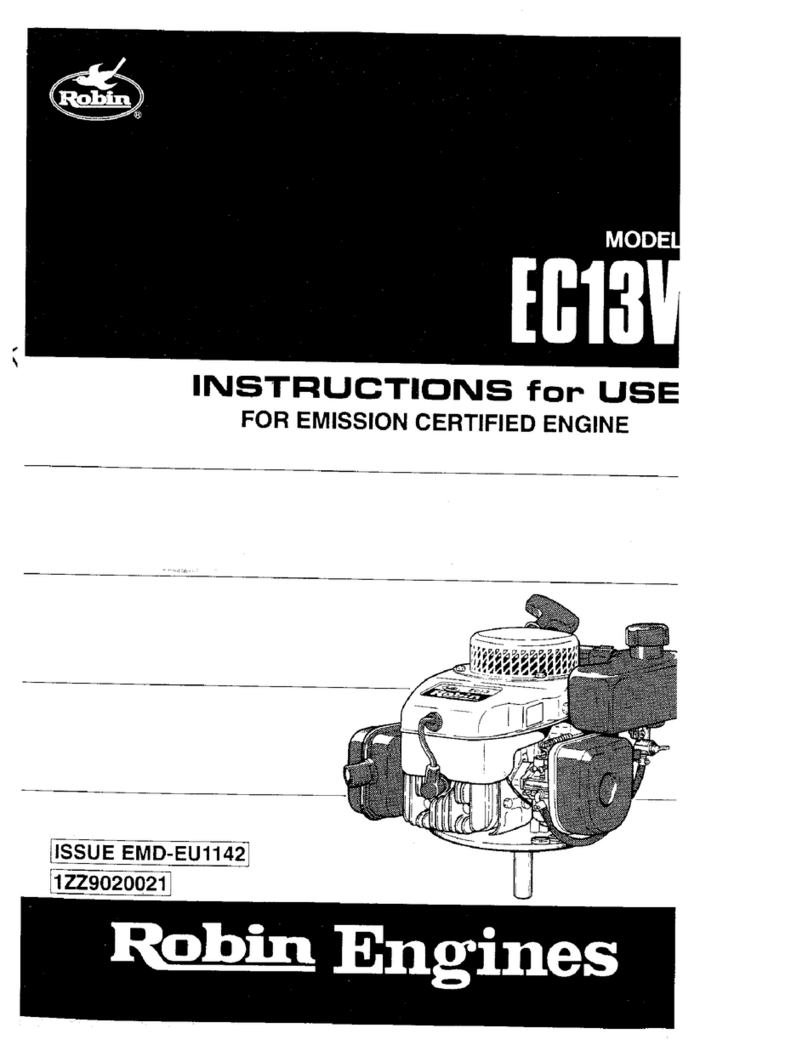
Table of Contents
1 Safety
1.1 Important provisions for all products 5
1.2 Correct use of all products 6
1.3 Personnel and organizational requirements 7
1.4 Safety regulations for initial start-up and
operation 8
1.5 Safety regulations for assembly,
maintenance, and repair work 10
1.6 Fire prevention and environmental
protection, fluids and lubricants, indirect
materials 14
1.7 Standards for safety notices in the text 16
2 Transport
2.1 Transportation 17
2.2 Lifting requirements 18
2.3 Crankshaft transport locking device 19
2.4 Engine mount shipping lock 22
3 General Information
3.1 Engine side and cylinder designations 23
3.2 Engine layout 24
3.3 Sensors and actuators – Overview 25
4 Technical Data
4.1 Product data 20V4000G44F, 20V4000G94F 29
4.2 Firing order 34
4.3 Engine – Main dimensions 35
5 Operation
5.1 Putting the engine into operation after
extended out-of-service periods (>3 months) 36
5.2 Putting into operation after scheduled out-
of-service-period 37
5.3 Engine – Starting in manual mode (test run) 38
5.4 Safety system – Override 39
5.5 Operational monitoring 40
5.6 Starting the engine in emergency situations
(override mode) 41
5.7 Engine – Stopping in manual mode (test
run) 42
5.8 Emergency engine stop 43
5.9 After stopping the engine – Engine remains
ready for operation 44
5.10 After stopping the engine – Putting the
engine out of operation 45
5.11 Plant – Cleaning 46
6 Maintenance
6.1 Maintenance task reference table [QL1] 47
7 Troubleshooting
7.1 Troubleshooting 49
7.2 Fault messages of the engine governor (ECU
9) for Series 4000 genset engines
(preliminary) 52
8 Task Description
8.1 Engine 101
8.1.1 Engine – Barring manually 101
8.1.2 Engine – Turning on starting system 103
8.1.3 Engine – Test run 104
8.2 Cylinder Liner 105
8.2.1 Cylinder liner – Endoscopic examination 105
8.2.2 Cylinder liner – Instructions and comments on
endoscopic and visual examination 107
8.3 Crankcase Breather 109
8.3.1 Crankcase breather – Oil mist fine separator
replacement 109
8.3.2 Crankcase breather – Filter element
replacement 110
8.4 Valve Drive 112
8.4.1 Valve protrusion – Measurement 112
8.4.2 Valve gear – Lubrication 116
8.4.3 Valve clearance – Check and adjustment 117
8.4.4 Cylinder head cover – Removal and
installation 120
8.5 Injection Pump / HP Pump 121
8.5.1 HP fuel pump – Filling with engine oil 121
8.6 Injector 123
8.6.1 Injector – Replacement 123
8.6.2 Injector – Removal and installation 124
8.7 Fuel System 130
8.7.1 Fuel system – Venting 130
8.8 Fuel Filter 132
8.8.1 Fuel filter – Replacement 132
8.8.2 Additional fuel filter – Replacement 133
8.8.3 Fuel prefilter – Pressure ratios 134
8.8.4 Fuel prefilter (non-switchable) – Draining 135
8.8.5 Fuel prefilter (switchable) – Draining 137
8.8.6 Fuel prefilter (switchable) – Contamination
indicator check 140
MS15058/01E 2017-05 | Table of Contents | 3
DCL-ID: 0000042305 - 002
